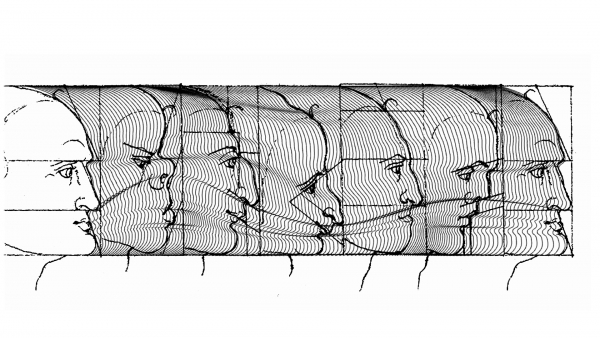Albrecht Dürer
In the 14th century, Albrecht Dürer basically seems to capture some of the fundamentals of contemporary parametric design. Apart from other thinkers of his age, he refused to accept one single definition of beauty, based on proportions. His famous physiognomical studies reflected very early examples of referential systems that generate diverse design outputs, even a half-century before Descartes published the coordinate system and four centuries before D’Arcy draw the formal studies on species. I don’t know if he is mentioned in historical studies of computational design today but he seems to me as very underestimated in this field. Below are some of the phrases from Erwin Panofsky’s book about him, explaining Dürer’s background, his ideas about representation, and his understanding of the beauty within variation itself, but not in any single body.
…Dürer was the first artist who, brought up in late-medieval workshops of the North, fell under the spell of art theory as it had evolved in Italy. It is in his development as a theorist of art that we can study in vitro, as it were, the transition from a convenient code of instructions to a systematic and formulated body of knowledge. And it is in his contributions to this body of knowledge, written and printed, that we can witness the birth of German scientific prose…
…He emphasized the basic difference between a geometrical figure in the abstract and its concrete realization in pen and ink (the mathematical point, he says, is not a “dot”, however small, but can be “mentally located so high or so low that we cannot even reach there physically,” and what applies to the point applies a fortiori to lines); he never confused exact awith approximate constructions (the former ones being correct “demonstrative”, the latter ones merely “mechanice”); and he presented his material in perfect methodical order…
…He didn’t share Alberti’s belief that one objective norm of beauty could be laid down in one canon. He had come to realize that perfect or absolute beauty transcends the human mind, that is does not reside in any individual body and reveals itself in many shapes. Like Leonardo’s “varieta”, representation of beauty, not by way of a decree valid under all circumstances but many diverse shapes…
Erwin Panofsky, 1955, “The Life and Art of Albrecht Dürer”
Below are his own words, explaining the relativist notion of beauty, after his parametric explanation of human figures;
…when we now ask how to produce a beautiful figure…
…I believe that there is no man alive who might think out the maximum of beauty in the lowliest living creature, let alone in man who is a special creation of God and master of the other creatures. This I admit that one man may contemplate and produce a figure more beautiful than can another, and may demonstrate it with good natural reasons plausible to our understanding; but not to that extent that it could not be still beautiful. For this does not enter the mind of man …
…Nobody knows what makes a good shape unless he knows before what makes a bad one…
Bernard Cache is giving lectures about the parametric reading of Dürer and is about to publish a book on this.
There is also a very interesting artwork called Profilograph by Pablo Garcia. Below is the initial section development of that project. Here is the link to the project video.









